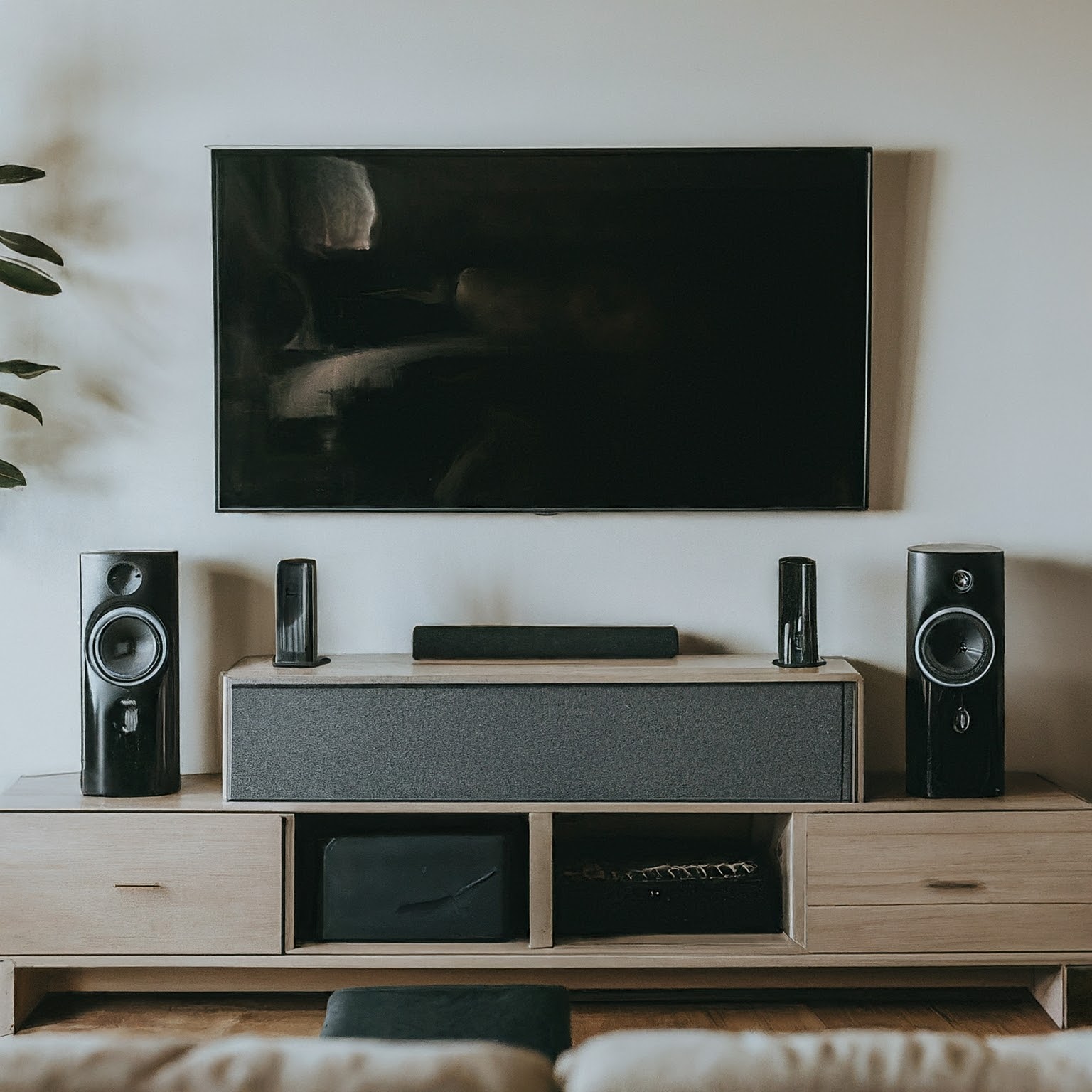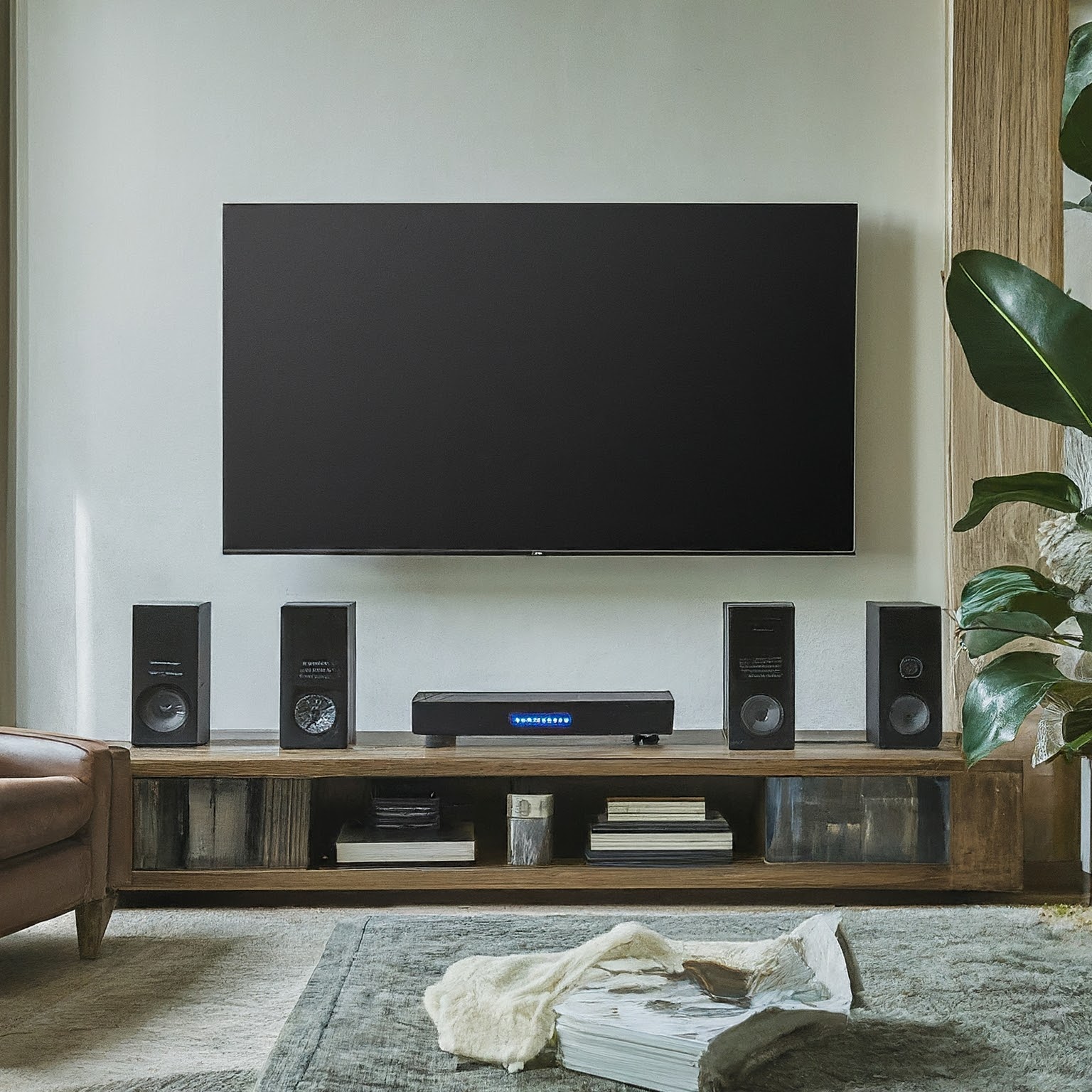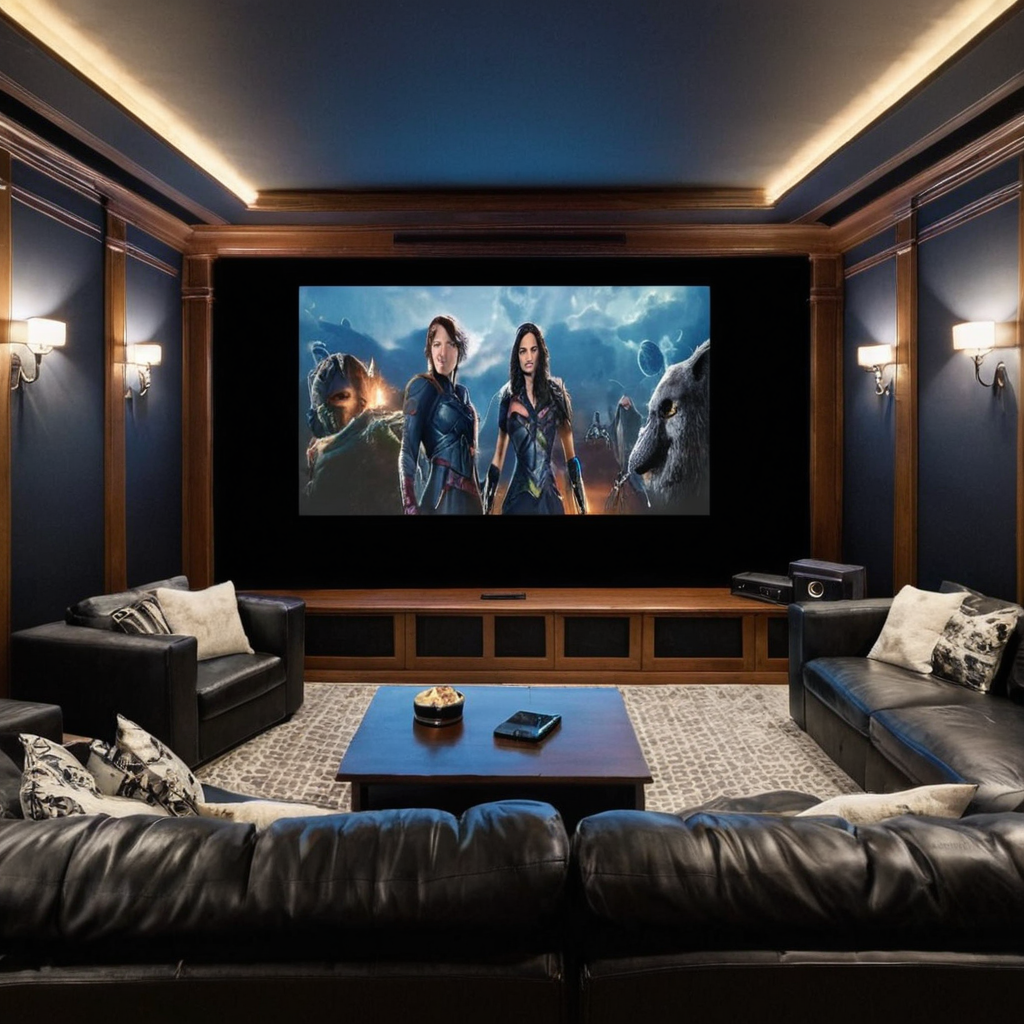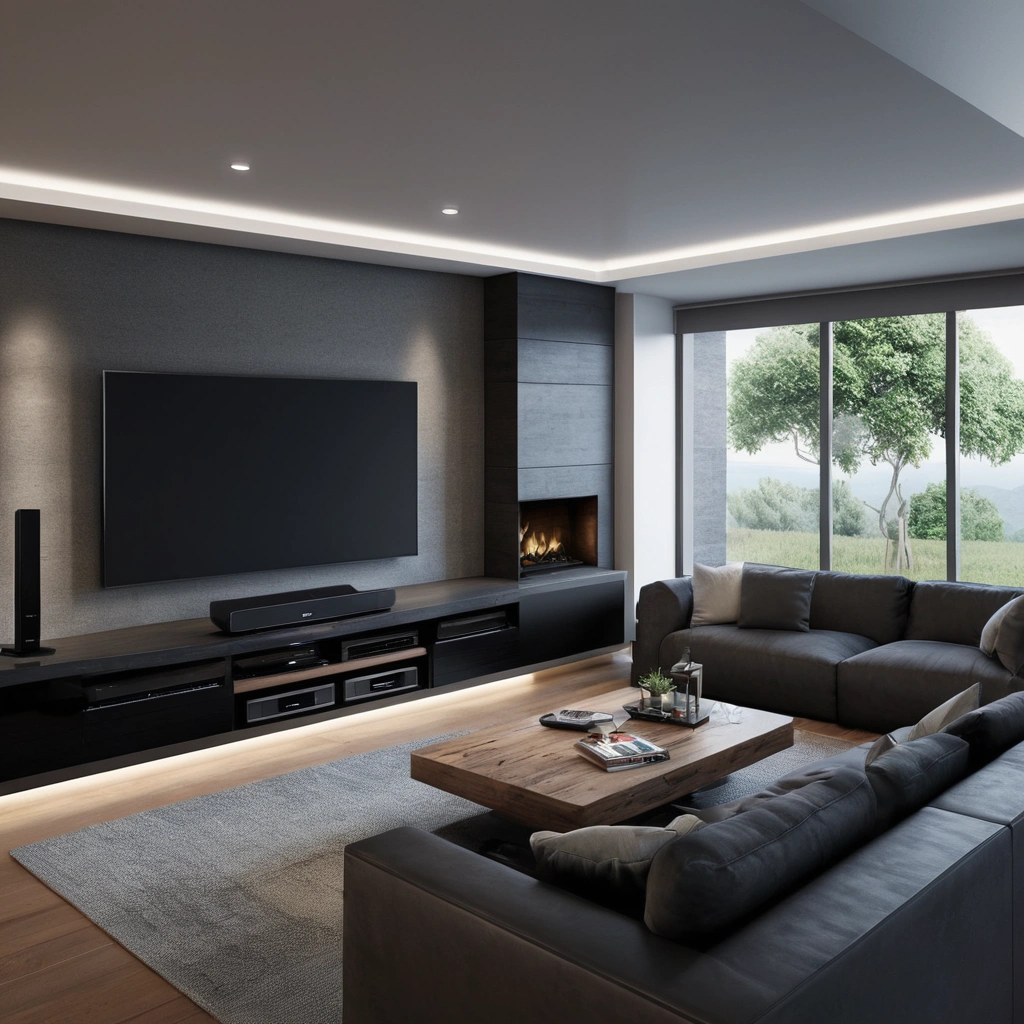We’ve all been there – snuggled up on the couch ready to enjoy the latest blockbuster, when all of a sudden an earworm of a song gets stuck in your head begging to be played at top volume. As the owner of a Dolby atmos-enabled home theater system, it’s tempting to crank up the playlist and feel every pulse of the bassline shake through your living room walls. But are home theater systems good for music?
Home theater systems are primarily designed to deliver an immersive, theater-like experience for watching movies and TV shows in the comfort of your own home. With powerful subwoofers, surround sound speakers, and soundbars engineered to precisely place audio across multiple channels, these setups do an incredible job of transporting you to the center of the action on screen.
However, their default equalization curves and processing are tuned more for accurately rendering film dialogue and sound effects rather than high-fidelity music reproduction. That’s not to say you can’t get good results listening to music through your home theater. There are some advantages to using the system you already own.
Advantages of Using Home Theater Systems for Music
It’s no secret that home theater systems are designed primarily for an immersive movie experience. However, for many avid music lovers, a well-configured setup can bring renewed excitement to your favorite tunes. While some worry that home audio sacrifices fidelity for effects, leveraging its strengths opens up new ways of enjoying music that matches how we truly listen. Let’s explore the enhanced sound experience, versatility, and overall fun factor that home theaters provide for people first.
An Immersive and Enhanced Sound Experience
One of the biggest benefits home theaters offer is truly feeling like you’re inside the performance. Unlike traditional stereo setups confined to two front speakers, a multi-channel environment draws you into the heart of the action. For genres like classical, opera, or live recordings, nothing beats the sensation of musicians surrounding and embracing you from all angles. The spatial cues of individual instruments mingling throughout the room bring you closer to the live event.
It’s here where properly configured high-quality speakers shine. A 5.1 or greater system spreads sweet violin melodies, booming timpani, or ethereal vocals across the listening area. You hear subtle reverberations and hall ambiance with breathtaking realism. Even familiar albums garner renewed appreciation as previously hidden layers emerge from new positions. If your setup supports Dolby Atmos, the overhead dimension adds unprecedented vertical positioning for a perception of being on stage with the performers themselves.
While some sacrificed two-channel purity for multi-channel positioning, most receivers today include pure stereo modes optimized for traditional recordings too. The best of both worlds means choosing your preferred presentation style depending on your mood or the music’s original recording format. Overall, home theater places you right in the heart of performances in a way that enhances musical enjoyment for all listener preferences.
Best Amplified Bookshelf Speakers Reviews and Buying Guide
Feel the Bass: Deep and Tight But Not Overpowering
Nothing gets the party started or adds visceral energy to a track like a powerful low-end. And with a properly set-up subwoofer, your home theater intensifies the most impactful frequencies far beyond what speakers alone could muster. Smooth, well-extended bass lends body and realism to male vocals, hi-hats, percussion, and more. You can truly “feel” every drum hit and guitar lick deep in your soul.
However, bass management matters greatly since an overzealous sub can overwhelm delicate melodies or vocals. With adjustable crossovers and level trims, finding the right balance ensures each instrument maintains clarity within the full-bodied mix. Setting the crossover frequency slightly higher for music often prevents mid-bass muddiness compared to movies with heavy effects. A few small tweaks afford you booming lows that enhance – not overpower – the listening experience.
Versatility for Different Listening Modes
While immersive surround shines for classical and live recordings, other music playback modes suit different tastes. Stereo wisely focuses the soundstage for true-to-form stereo mixing. Movie mode prioritizes dialogue-friendly tuning that still pleases casual listeners. You can even select virtual surround modes that up-mix stereo tracks into a wider, more spacious field through processing magic.
Genres like pop, rock, and EDM burst to life from all angles in a surround environment. Jazz and acoustic fare retain intimacy in two-channel purity. Many top receivers even include musician-designed EQ presets tailored for optimum piano, string, and vocal reproduction. Audiophiles looking for reference accuracy can further tweak room correction, levels, and other system parameters. However, casual listeners need only press a single button for an immediately gratifying experience.
Convenience and Flexibility for Any Listening Space

Few would argue the value of an all-in-one multimedia device that rocks both your favorite films and most treasured records in equal measure. One remote, single app and unified ecosystem eliminates the hassle of separate music/theater components. Whether cozied up or entertaining guests, hitting play conjures up the ideal ambiance with minimum effort.
Furthermore, space need not constrain your enjoyment. While large floorstanding speakers demand ample real estate, many home theaters today utilize super slim soundbars or in-wall/ceiling speakers. These discreet yet potent designs fit nearly anywhere while retaining magnificent performance within small footprints. Some elevate playback further using wireless rear speakers or subwoofers for true surround regardless of room size.
Whether as your primary system or complement to a dedicated hi-fi, a thoughtfully selected home theater brings accessibility to musical bliss no matter your environment or needs. Convenience allied with superb fidelity makes rediscovering old albums and finding new favorites a truly immersive pleasure.
In the end, leveraging home theater strengths with careful configuration liberates music lovers from format limitations. Multiple dimensions, enveloping bass, and versatility suit every preference while eliminating compromise. The added dimension of being fully present beside favorite artists makes rediscovering passions through home audio a joy for people of all tastes.
Disadvantages of Using Home Theater Systems for Music
We all want to enjoy our favorite songs and artists to the fullest. But setting up the perfect music listening environment takes some consideration. While home theater systems offer an immersive experience for movies and television, they may not be the best option for serious music fans. Let’s explore some potential drawbacks home theater setups present and how you can optimize your system for the best musical experience.
Sweet Spot limitations
One challenge many home theater designs present is limited seating flexibility. Speaker placement in these setups aims to create discrete surround channels that envelop the listener. But to hear the balanced, full-range sound the artist intended requires sitting in the “sweet spot” – the optimal listening position. Small movements from this centralized location can negatively impact the soundstage and blend of individual audio elements.
For many people, relaxing and fully enjoying music involves shifting positions or walking around the room. Fixed theater seating restricts this freedom of movement. You’ll only experience the high-quality mix from the sweet spot, with EQ shifting noticeably off-center. While fine for focused movie watching, it can compromise your connection to and assessment of a musical work during casual listening.
Prioritizing immersion over detail
Home theater gear often emphasizes room-filling volume and acoustic effects over flawless frequency response. Large drivers and powerful amplifiers produce thunderous low-end and directional surround sound effects. However, this focus on immersive cinema comes at the cost of subtle nuances and fine details so important to appreciating music.
Compression and EQ applied to balance loud action sequences may obscure delicate instrumental tones and vocal resonances. Dialogue enhancement processing intended for movies can artificially color musical recordings. Most home theater audio is not calibrated for accurate reproduction across the audible spectrum. This “good enough” approach satisfies video needs but leaves music lovers wanting more precise audio fidelity.
Room acoustics require attention
The reverberant environments home theaters create also influence sound quality – and not always for the better with music. While theaters aim for a neutral response, every room has natural resonant modes that color what reaches our ears. Nearby walls and furniture further impact the tone. Without calibration, these room interactions can muddle instrumental blends or soften dynamic contrasts – things easily missed during loud movie passages become distractions during a symphony’s soft moments.
Equalization aimed at optimizing a theater may be far from ideal for musical playback. Accommodating room modes benefit neither genre alone. So while many systems offer rudimentary calibration tools, serious listeners need full-featured parametric EQ, decay measurements, and custom target curves to reach the highest possible fidelity. Unfortunately, that level of acoustical expertise exceeds what most casual users envision for a home entertainment system.
How to Optimize Your Home Theater System for Music

As someone who loves both movies and music, I wanted a setup that could serve both purposes well without compromise. When I first installed my home theater years ago, the priority was big cinematic sound to complement blockbuster films. But over time, I’ve found myself listening to more music at home too. That’s when I started to notice some limitations my system faced for serious listening sessions.
While my surround sound setup delivered thrilling audio adventures in movies and games, I noticed music lacked the nuanced clarity and balanced soundstage I enjoyed from my dedicated stereo. Vocals seemed recessed compared to booming bass, and subtle tones disappeared into the room’s reflections. Movement from the central “sweet spot” disrupted my connection to my favorite albums. It was clear my theater leanings needed adjustment for critical music appreciation.
Thankfully, modern AV receivers offer versatility beyond their cinema roots. With some calibration targeted specifically for music playback, I believe any multi-channel system can become a great stereo setup too. The concept is accessibility – allowing systems already in homes to serve both video and audio entertainment rather than requiring separate, specialized configurations that not everyone can accommodate.
Optimize the system for 2-channel music playback
My quest began with the optimization of the two-channel music mode my receiver offered. I started by disabling unnecessary processing like bass management and additional amp channels engaged for 5.1 sound fields. This focused all processing power onto pure stereo reproduction through my front speakers only. Next, I selected the Direct/PureAudio mode bypassing digital filters and surround virtualization that could alter the recording’s original mix.
Calibrate room EQ specifically for music
With the foundation in place, I turned my attention to acoustics – an aspect home theater setup often neglects but vital for natural music listening. Using REW room measurement software and a calibrated microphone, I analyzed how my room’s natural resonance modes interfered with the clarity of different frequencies. I then fine-tuned my receiver’s basic automatic room EQ to provide just the necessary taming of problem areas, smoothing out PBS response without subtracting resonance character that adds life to music.
Consider acoustical treatment
Room treatment came next through targeted acoustic panels. Bass traps in the front corners controlled low-end boom without bloat, restoring critical balance in basslines and kick drums crucial for genres like pop, hip-hop, and EDM. Absorbers on first reflection points helped remove muddy overlaps in vocals. I consciously avoided over-treatment to retain some natural reverb preferred by many listeners. The goal was to optimize realism without erasing my space.
Add a high-quality 2-channel amp or integrated amp
Last came the addition of a muscle powering the stereo that had previously been underserved by the built-in amplifier in my AV receiver. By adding a quality integrated amplifier between my TV and speakers, even non-audiophile friends remarked on how “the music sounded like it popped right out of the room.” Accessibility is about not requiring audiophile-level separate components when some strategic upgrades within a mainstream setup accomplish great results.
Through thoughtful configuration, calibration, and treatment targeted at natural two-channel listening, I’ve turned my home theater system into one that serves both movies and serious music superbly depending on what mode I engage. Whether it’s an album or an immersive cinema experience, my optimized setup now delivers enjoyment without compromise across genres. And all with technologies and techniques available to the everyday user without academic training or tiers of bespoke hardware. Accessibility makes the joy of balanced audio achievable by many more people in their own spaces.
While dedicated stereo rigs likely offer even higher performance, I have no intention of sacrificing valuable real estate or budget for separate theater and music rooms. With some passion and effort on acoustics, even a multi-function setup can become superb for focused musical listening while maintaining exceptional cinema prowess. My system now allows easy switching between visual thrills and analytical sonic appreciation based on content and mood – a versatile solution any home theater enthusiast can achieve.
Making an Informed Decision

Wherever our passion for music takes us, the goal is to enjoy our favorite artists to the fullest. However, selecting the optimal listening environment requires thoughtful consideration of individual needs and circumstances. With so many options available today, how can you determine whether a home theater, stereo system, or something in between best suits your priorities? Let’s explore some important factors in making an informed choice.
Consider Your Listening Habits
First, reflect on how you primarily consume music. Casual background playback? Focusing intently on complex mixes and instrumentation? Your answer guides the decision. Home theaters work well for occasional tunes alongside movies and TV. But serious music lovers generally favor dedicated stereo systems for analytical listening without compromise.
If jazz, classical, or high-resolution indie rock tops your regular rotation, a stereo may better serve true enjoyment. Its design centers sound precisely where you sit versus dispersing it through walls. Quality separates especially satisfy discerning ears. But multi-channel is nice for party playlists, relaxation, or background music throughout chores. Factor dominant genres into any purchase or upgrade.
Evaluate Your Budget
System costs vary tremendously depending on components, channels, and technology. Basic A/V receivers and soundbars can play tunes affordably. But serious audiophiles seek high-end separates capable of precise, detailed dynamics. Budget dictates if home theater, stereo or blended route works best without future buyer’s remorse.
Entry-level or used deals around 500 deliver decent tunes, while 1000-2000 unlocks much fuller audio. Above $2000, you’re investing in excellence for critical listening. Consider your priorities – music quality alone may justify a budget stereo over cheaper theater options if funds allow only one setup. Shop sales and used gear to expand affordable choices too.
Research and Read Reviews
Don’t buy blindly based on brand recognition alone. Research specific models’ intended uses and user reviews discussing their music performance. Reliable evaluation sites and owner forums provide wisdom from others’ real-world experiences. Note common praises and criticisms that relate to your scenario.
Pay attention to calibrated measurements assessing frequency response accuracy and channel matching crucial for balanced stereo playback. Industry accolades recognize technical achievements, while consumer impressions reveal overall satisfaction or second thoughts after living with gear. Comparing direct takes on the same systems illuminates their merits for your application. Knowledge aids in selecting setups optimized for your enjoyment.
In deciding between home theater and stereo options, or finding a hybrid solution, the pathway becoming clear depends on evaluating priorities thoughtfully. While constantly evolving gear offers versatility, knowing your dominant listening habits and budget upfront guides choosing equipment satisfying that passion for years to come. With informed research embracing multiple viewpoints, you’re empowered to select the right audio experience personalized to your unique situation and musical tastes.
My Final Thoughts and Recommendations

Are home theater systems good for music? When it comes to selecting an audio system, there’s no single right answer – it depends on your unique needs and situation. However, I hope sharing my insights provides helpful context before making such an important decision. Let’s summarize the key considerations:
Home theaters can certainly deliver enjoyable music alongside their primary role in movies and games. Their immersive qualities satisfy casual listeners. However, for those who deeply analyze and critique recordings, dedicated stereo or music systems may reproduce tunes more accurately without compromises made for other media. Audiophiles demand flawless frequency response above all else.
Ultimately, choosing between versatility or focus comes down to priorities. Do you value creating an all-in-one entertainment zone, even if it means occasional tradeoffs in two-channel purity? Or is optimizing the listening experience for serious analysis through high-quality stereo your top criteria? Answering this facilitates the optimal choice.
Budget also shapes possibilities, so seeking the best value aligned with your priorities is wise. New and used options abound at all cost levels today. With thorough research, an affordable solution satisfying core needs is within reach.
I hope considering angles like primary listening habits, budgets, and vetting specific products empowers you to make the most informed selection for your unique situation and passion. While I can offer perspective, only you understand what truly matters most in your audio journey.
Whichever route you go, do not hesitate to continue exploring this topic. Feel free to share additional questions in the comments – I and others in the community aim to help however we can. This marks just the beginning of an enjoyable lifelong pursuit of better understanding and crafting exceptional musical experiences. I wish you the very best in your setup and in enjoying many years of inspiration from your favorite artists.
Best Budget Bookshelf Speakers Under 100
FAQs
Can you listen to music on a home theater system?
Yes, while home theater systems are designed more for movies, many people enjoy listening to music through them as well.
What is the difference between music system and home theater?
A music system focuses solely on stereo playback accuracy while a home theater prioritizes immersive effects for movies through surround sound processing and multiple channels.
Which is best for music soundbar or home theatre?
Generally, a home theater would provide a richer, more detailed musical experience compared to a basic soundbar. But sound quality depends on the specific models.
Can you use a home theater receiver for music?
Yes, many AV receivers have modes that allow for high-quality 2-channel music listening by disabling extra processing and focusing the power on front speakers.
Is an amplifier required for home theater?
A quality amplifier is needed to power the speakers in a home theater system to achieve sufficient volume levels for movies.
Can I use surround speakers for music?
You can, but a true stereo setup with just two front speakers is usually recommended for the most accurate music reproduction.
Are home theaters good for music?
While they can work, home theaters are usually better suited for movies due to bass management, room sizes, and setup priorities. Stereo systems have fewer compromises.
Which is better home theatre or speaker?
Both have pros depending on your priorities. Speakers alone have purity but a home theater provides versatility if properly configured for music playback.
Is HiFi better than home theatre?
Generally, a HiFi or dedicated stereo system will have less processing and finer controls allowing for more accurate and nuanced music reproduction compared to a surround sound home theater.

Kenny Owen is an acclaimed audio expert and longtime enthusiast with a deep passion for sound technology. With over 15 years of experience in the car and home audio industry, Kenny has established himself as a trusted authority on everything from speaker setups and amplifier configurations to the latest audio equipment and innovations.
Through his engaging writing style and meticulously researched articles, Kenny shares his vast knowledge on optimizing audio systems for superior sound quality. He provides in-depth tips and tricks for achieving the best listening experience, whether it’s tuning a car’s audio system for an immersive musical journey or creating a high-fidelity home theater setup. Additionally, Kenny’s comprehensive buying guides empower readers to make informed decisions when investing in audio components, ensuring they get the most bang for their buck.
